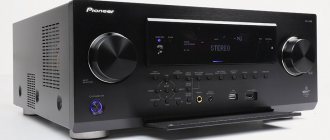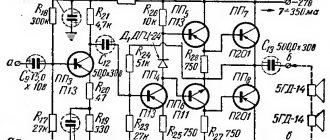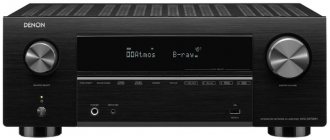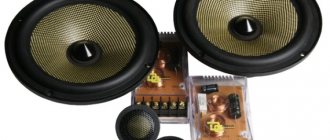Studying the list of features of a modern AV receiver of this class may lead you to believe that it is worth buying only if you are upgrading to the latest 3D audio and 4K video formats. In fact, it makes sense to buy it simply to improve sound quality, regardless of formats.
Modern receivers amaze with their versatility. They initially took on the role of the center of multi-channel home systems, and now they are also replacing audio players. Half of the top of the Pioneer VSX-LX504 box is dedicated to listing music streaming services and network capabilities alone, while the ends report supported multi-channel formats.
However, even budget models today boast such a solid set of functions, and even smartphone manufacturers claim support for the same Dolby Atmos. How, then, does this receiver stand out against the background of inexpensive devices?
The average store will probably mention two HDMI outputs. Indeed, this is a certain sign of high-end models. For those options when the system wants to combine a projector and a TV behind a retractable screen, this is a convenient thing.
But if there is only one display device in the system, and you want to get maximum quality in the video part, then it is better to choose a video player with two HDMI outputs - and connect it directly to the display device. In this case, even if there are several players/set-top boxes in the system, the second output on the receiver becomes irrelevant.
But the scaler/scaler in the receiver is relevant. It's not that it can be better than on TV. It’s just very good for working with sources that produce an interlaced signal - set-top boxes, DVD players and other devices of yesteryear.
TVs and, especially, 4K projectors approach conversion too “head-on” and do not completely hide the interlaced nature of the signal, which is why jagged edges appear on the sides of objects in the image. The Pioneer VSX-LX504 is clearly adapted to working with such a signal; it even has a component input for very old devices, which in most cases is absent from the same projectors.
Preamp and ceiling
The sound improvement is facilitated, for example, by a whole line of preamplifier outputs. More affordable models actually do not have them - there are only subwoofer outputs. And here, with their help, you can fully implement a system with four ceiling speakers, whereas in inexpensive models only two channels are usually allocated for them.
But, of course, the main thing for all sound lovers will be the ability to connect an external power amplifier for the front pair or trio, because these channels account for the maximum audio information and a lot of low-frequency sounds. With it, the receiver begins to “breathe” much more freely - the built-in power amplifiers and power supply are sufficient for all surround channels, the sound becomes an order of magnitude better, and you simply don’t remember about the lack or excessive softness of the bass.
In addition, linear preouts for the front make it possible to combine both classic stereo and cinema in one system without compromise. More precisely, combine two systems into one, without losing anything in terms of sound.
At one time, based on this, I bought a receiver with preamplifier outputs, but at that time it was still seven-channel. And the increase in sound quality compared to an inexpensive five-channel device manifested itself as described just above. However, the effect of two additional channels at the rear had little effect, and this raised doubts about the need for a further upgrade with the addition of ceiling speakers. I am sure many of you, dear readers, have had similar doubts.
But how wrong I was! By adding just two temporary additional speakers on top, I finally got the desired sound environment, when sounds in particularly tense moments “pour down” on the listener from all sides. And these are not just the impressions of the “discoverer”. There are several reasons for this.
Firstly, tracks in Dolby Atmos and DTS:X are simply better and richer recorded than similar ones in Dolby TrueHD and DTS MA - they simply have more sounds that are not reproduced in 7.1. Secondly, the unusual direction of origin of the sounds, that is, from above, radically changes the impression of the track. And thirdly, and most importantly, the Pioneer VSX-LX504 processor works an order of magnitude better than the “stone”, albeit expensive, 7.1-channel device.
Control and order
The “seven hundred and fourth” weighs 15.5 kg - a very impressive figure for a device with pulse amplification. The main culprit behind the considerable weight is also visible through the top grille - a huge network transformer. Surprisingly, the power consumption of our big guy is stated at only 310 W.
Be that as it may, in the sound signature of the Pioneer SC-LX704B, first of all, I would like to note stability and solidity. Not the least role here belongs to a very efficient auto-calibration system, which copes well with the asymmetrical position of reflecting and absorbing surfaces, and with the non-optimal placement of ceiling emitters. As a result, multi-channel tracks do not lose focus, and virtual objects are perfectly positioned in space.
The front panel and main controls are aluminum
In a word, I was very pleased with the volume of the stage, the accuracy in details, and the controllability of the complex spectral composition of the sound. As far as dynamics are concerned, this will largely be determined by your subwoofers. The MCACC Pro system will help match them with the main mix in phase and level, but, of course, it will not add power or bass depth to them - so it’s better not to skimp on bass machines.
Now about the music. The developers clearly chose ESS Saber DACs for good reason. Their exhaustively detailed, crystalline character is perfect for building an entire sphere of finely tuned film sound around the audience. In stereo playback, this specificity is preserved, and many will certainly like this character. Perhaps there will be a little less softness and warm living breath in it than connoisseurs of genres like vocal chamber jazz are used to hearing.
Interestingly, DSD recordings begin to sound as close as possible to PCM high-cuts. But I wouldn’t count such a craving for refined specifics as a minus.
What we have in front of us is not a tube amplifier for top-end headphones, but a multi-room combine that must clearly, distinctly and energetically convey musical material to bedside wireless speakers, to built-in Atmos emitters, and to a whole swarm of surround speakers. And our hero copes with this multifaceted task perfectly.
Advantages:
amazingly diverse functionality, accuracy and high detail in building a complex multi-channel environment, masterful operation of the automatic calibration system.
Flaws:
there is no support for the aptX and aptX HD Bluetooth protocols, as well as pass-through of Dolby Vision signals, and the headphone amplifier is not very powerful.
Auto-Tuning and Conversion
This model uses a quad-core Cirrus Logic, working in conjunction with DSP Aureus, and a more advanced MCACC auto-calibration system with multi-point adjustment of the listening field than on 7.1 models. They transform the signal in such a way, setting delays and eliminating the resonances of the room, that degradation is not felt at all by ear - on the contrary, it only gets better, because some resonances in the living room cannot be removed even by expensive audio preparation of the room.
The result is a real three-dimensional sound picture that surrounds you from all sides, and not individual sounds, music and creaks with something like explosions. Moreover, it seems that the sounds in the area of resonances typical for an apartment have not gone away, and dips are not felt, so precisely the processor “cuts out” from the track those frequencies at which these resonances arise.
I listened with pleasure to all the films with immersive audio tracks from my collection, in fact, discovering them for myself anew. It's a pity that the receiver does not support Auro 3D in any form. There are catastrophically few films released in this exotic format on discs and in files, but among them is one of two Russian films with 3D sound, and a very good one at that - “Salyut-7”.
However, the receiver’s processor has learned to compensate for this deficiency quite well. It quite effectively converts 7.1 and even 5.1 tracks into 7.1.2 and 7.1.4, enveloping the listener with sounds from all sides, and sometimes in such a way that it seems as if the sound engineers originally intended this type of conversion.
The receiver supported the usual tracks not just with a certain background above, but also with very specific events, such as a flying starship or sounds from the musical accompaniment.
Also, in my opinion, other DACs on the front channels play a significant role in the feeling of high-quality sound in comparison with older and more affordable models. For them, the creators provided PCM5101A chips from Texas Instruments, which are, in fact, modified by Burr Brown, while the remaining channels use AK4458 circuits, which are used on all channels in the available models. It seems to me that it is because of them that this receiver sounds very good not only in movies, but also when playing music.
Classics of the genre
The SC-LX704 model occupies the second position from the top in the new catalog of receivers, second in capabilities only to the most elite device with the index 904. I will say right away that it differs from the flagship only in the number of amplification channels (nine versus eleven) and only slightly in their power (205 W versus 215 W). In other words, we have before us the same flagship, only adapted for a room of not too provocative dimensions.
To begin with, I want to share something that has been painful for a long time. I don’t know why, but the designers of absolutely all electronic brands clearly decided that original, interesting designs are contraindicated for receivers, like alcohol during pregnancy.
For many years they have been trying their best to perfect the black rectangular box with two large drums and a hinged door between them, but are not willing to move even half a step away from this archaic template. I'm willing to bet that whoever decides to do this first will increase sales of their devices by hundreds of percent.
When planning installation, keep in mind that the case depth is a whopping 44 cm, and this does not include antennas and the space required for wiring.
And within the framework of the usual design concept, the Pioneer SC-LX704B is almost flawless. Basically, the visual reputation of this big guy is formed, oddly enough, by small details: thin chamfers on massive regulators, unobtrusive backlighting of the power button, which echoes the small blue inserts on the fluorescent screen, a small “chin” on the door... As a result, the device looks strict , but not boring - and quite stylish.
Listen to music
Purists at this point may exclaim that they don't buy receivers to listen to music! But I will object: it is on such devices that buyers will listen to it! Because in the overwhelming majority of cases such devices are bought for living rooms. The creators of the device understood this perfectly, which is why they equipped the Pioneer VSX-LX504 with everything that might be needed for this.
The receiver supports streaming services Tidal, Spotify, Deezer, Apple Music, Amazon Music, Internet radio via Tunelin, works as a Chromecast device with Google Assistant support, connects via AirPlay 2 and works with Sonos devices. It can also play audio files itself, including Hi-Res up to 192 kHz/24 bit for FLAC and ALAC and up to 11.2 MHz DSD, from USB flash drives and over a local network from a server or computer that supports the DLNA protocol. All in all, it gives you all the options you need to listen to music without having to buy an additional device to do so.
And it sounds very good. Moreover, even without connecting an external power amplifier and with a load of six speakers, two of which are floorstanding speakers with a sensitivity of 90 dB, operating as a front pair.
The whole point, apparently, is in the power source, which allows the built-in power amplifiers to deliver almost the entire supply of “thrust” (in terms of current) to the speakers - the receiver at maximum can consume up to 870 W! While inexpensive models only have enough for two amplification channels. That is why in stereo, especially in Pure Direct mode, the sound of this receiver did not even have a hint of flatness or constraint in presentation: there was musicality, attack, and even microdynamics on complex multi-instrumental compositions.
A thousand little things
Having opened the lid on the facade, I discovered a scattering of small buttons containing everything necessary to do without a remote control if something happened. Here you can also find a complete gentleman's set of front switching: headphone jacks and a calibration microphone, USB and HDMI ports.
But the real abundance was hidden, of course, on the back panel. There are only three HDMI outputs: for a flat panel, a projector and a second-zone monitor. There are six inputs - and it’s very hard for me to imagine a situation where even in the most extensive real-life setup there wouldn’t be enough of them.
Interestingly, Pioneer does not indicate the version of this interface in any official document. However, judging by the support for 4K/60p mode with full 4:4:4 color coding (for 8-bit colors) and the lack of 8K support, we are dealing with some kind of intermediate option that surpasses HDMI 2.0b, but does not reach HDMI 2.1. By the way, the HDCP content protection system of the latest version 2.3 is implemented here.
The back panel is filled to capacity, but access to the speaker terminals does not cause problems
Other useful features include five digital audio ports (two coaxial + three optical), a pair of jacks for controlling external devices and connecting additional infrared sensors, and, of course, a fair number of acoustic terminals.
The SC-LX704B has nine amplification channels, but eleven speakers can be connected to it - and this is not counting two subwoofers. This feature is useful for dubbing one or two additional zones and/or organizing bi-amping on the front channels. But our hero has eleven preamplifier channels, so its functionality can be further expanded using an external amplifier.
Pioneer VSX-LX504 – strong middle Testing the Pioneer VSX-LX504 AV receiver
The cinematic AV receiver Pioneer VSX-LX504 occupies a middle position in the elite line of LX multi-channel devices from Pioneer. On the one hand, this is the oldest model equipped with classic amplification (higher in the hierarchy of LX receivers are models based on proprietary Direct Energy HD amplifier modules operating in class D), on the other hand, this is the most affordable Pioneer AV receiver, which has a multi-channel analog output 11.2. It would seem, what makes us focus on this, at first glance, not very fundamental feature? But this may only seem at first glance.
The fact is that the presence of such an output on an AV receiver allows it to be used as an AV processor in advanced home theater systems. Moreover, you can improve your system gradually, starting with the usual circuit with a receiver and surround speakers and adding external power amplifiers over time.
The AV receiver's multi-channel analog output allows it to be used as an AV processor in advanced home theater systems. Moreover, you can improve your system gradually, starting with the usual circuit with a receiver and surround speakers and adding external power amplifiers over time. The use of external amplification allows you to solve the main problem of a multi-channel AV receiver - insufficient power supply. It is no secret that the power of the power supply (and the vast majority of receivers use one power supply) is often not enough to provide energy to all amplification channels, which is why in tense moments of films, when there is a significant load on all channels, the dynamics may sag, which is negative affects the expressiveness of the sound. In addition, the multi-channel output allows, if desired, the implementation of surround sound circuits that are, in principle, inaccessible to a specific AV receiver. For example, nine-channel devices, which include the VSX-LX504 receiver, are capable of servicing a 5.2.4 surround sound system with four ceiling speakers, or a 7.2.2 surround sound system with a pair of such speakers.
If the receiver is equipped with a multi-channel output, then by adding a two-channel power amplifier to the system, you can implement the current maximum circuit for a home theater that supports Dolby Atmos and DTS:X - 7.2.4 with four ceiling speaker systems. And finally, the presence of a multi-channel output opens the way to the integration of cinema and stereo systems, when the speakers involved in the stereo work in a home theater as a front pair. In this configuration, the signal from the front channels from the AV receiver is fed to one of the inputs of the integrated amplifier or “power” of the stereo system, simultaneously unloading the receiver’s power supply. Thus, the seemingly unimportant output from the pre-amplifier of an AV receiver significantly changes its functional capabilities.
What other differences can be noted between the Pioneer VSX-LX504 and VSX-LX304? The older receiver is equipped with HDMI version 2.1 ports that support an enhanced version of the eARC (Enhanced Audio Return Channel). Due to higher bandwidth, this channel can now broadcast multi-channel soundtracks in lossless DTS-HD, DTS:X, Dolby TrueHD and Dolby Atmos formats. In addition, high-resolution multi-channel audio is supported (up to eight channels with parameters up to 24-bit / 192 kHz). In addition, the older model retained analog video switching, offering one component and one composite input for connecting older video sources. However, there are no corresponding analog outputs here - the incoming video signal is converted into digital form and transmitted to the HDMI outputs.
A much more useful feature may be the VSX-LX504's ability to play DSD audio (11.2, 5.6, 2.8 MHz / 2 channels) not only from external USB drives, but also over a network. And finally, the older receiver can be configured remotely via a network from a computer, which makes the process more flexible than when using the device’s system menu. Let's not forget to mention the differences in design - the VSX-LX504 is equipped with a stylish folding door that hides the switching and auxiliary buttons located on the front panel of the receiver.
Otherwise, the Pioneer VSX-LX504 is similar to the younger model. Both receivers are built on a powerful computing platform based on a quad-core 32-bit processor from Cirrus Logic, working in conjunction with the Aureus DSP from Texas Instruments. The front channels are served by audiophile Burr Brown PCM5101A DACs from Texas Instruments, working with digital streams with parameters up to 32 bit / 384 kHz. The remaining channels use an eight-channel AK4458 DAC from Asahi Kasei.
The receiver, when working via HDMI, supports all the latest video formats, including 4K HDR10 and Dolby Vision. There is also a built-in video signal scaler, which increases the picture resolution from 1080p to 4K if necessary. When designing a surround sound system, the receiver allows you to avoid installing real speakers on the ceiling, emulating their operation using Dolby Atmos Height Virtualizer technology.
The main distinguishing feature of the latest generation of Pioneer AV receivers is support for the latest multi-channel soundtrack format IMAX Enhanced. More precisely, this is not a separate audio format, but an extension of the capabilities of the DTS:X format, which will be available in new Pioneer AV receivers very soon after the next firmware update. The hardware fully supports this extension. However, time is running out, since UHD Blu-ray IMAX Enhanced discs have just begun to appear on store shelves. According to the creators of the format, this extension can provide the same vivid viewing experience as when visiting a real IMAX theater.
Like any modern high-end AV receiver, the Pioneer VSX-LX504 is equipped with extensive network functionality with support for Wi-Fi wireless networks, as well as Bluetooth and Air Play2. However, the receiver can be integrated into a home computer network in a wired way, for which an RJ45 Ethernet port is provided on the rear panel of the device. Once connected in one way or another to a computer network, the Pioneer VSX-LX504 is able to provide access to all popular streaming music services, including Tidal, Spotify, Deezer, Apple Music, Amazon Music. Broadcasts of Internet radio stations via Tunelin are also supported.
To integrate the receiver into multiroom systems, it supports Chromescast wireless technologies, as well as DTS Play-Fi. But Pioneer’s main focus is on the proprietary FlareConnect protocol, which we described in detail in a separate article. In addition, full support for collaboration with wireless audio systems from Sonos is announced.
The main distinguishing feature of the latest generation of Pioneer AV receivers is support for the latest IMAX Enhanced multi-channel soundtrack format. According to the creators of the format, this extension can provide the same vivid viewing experience as when visiting a real IMAX theater. For testing, we included the VSX-LX504 AV receiver in a home theater system based on a set of Klipsch THX Ultra 2 speaker systems in a 7.2.2 configuration. The source was the top-end universal player Pioneer UDP-LX800. The picture was output through the AV receiver to a 4K QLED TV Samsung QE55Q80RAUXRU. Exclusively HDMI switching was used. Integration into a computer network was carried out via Wi-Fi using the 802.11/ac protocol. To initially set up the sound of the AV receiver, we used the built-in proprietary automatic calibration system MCCAC Pro, which not only accurately determined the parameters of the surround sound system, but also carried out channel-by-channel equalization to equalize the frequency response and compensate for standing waves and room resonances.
When accompanying movies, the VSX-LX504 amazed me with the scale of the sound canvas. The virtual stage opened far beyond the boundaries indicated by the walls of the cinema hall, and was distinguished by the clear positioning of sound sources. Moreover, the upper channels were used here “to the fullest,” expanding the stage in the vertical plane. Attention to the smallest details of the sound picture was complemented by confident development of dynamic bursts and elastic and taut bass. Pioneer's signature filigree style when decoding the soundtracks of modern blockbusters is fully represented in the VSX-LX504. And only when playing fortissimo a large symphony orchestra in Tchaikovsky’s “1812” overture, the receiver did not have enough power, which made me remember about possible ways to improve the system by adding external amplifiers.
Passport details:
Type – AV receiver | Name – Pioneer VSX-LX504 | price, rub. – 129 990 | Output power, W – 9 x 180 (at 6 Ohm, 1 kHz, when loading one channel, THD 1%) | Minimum resistance of connected speakers, Ohm – 4 (all channels) | Frequency range, Hz – 5 – 100,000 (level +1/–3 dB, linear input) | Signal-to-noise ratio, dB – 106 / 80 (line input / pickup input) | Decoding Dolby Atmos and DTS:X – yes (according to scheme up to 7.1.2 or up to 5.1.4) | Auto-calibration system – yes, MCACC | HDMI v.2.1 switching with support for HDR10, Dolby Vision, BT.2020 and HDCP v.2.2, inputs/outputs – 7 / 2 (eARC on one output) | 4K video scaler – yes (for 1080 signal) | Analog to HDMI video converter - yes | Analog video inputs – composite (2), component | Audio inputs – RCA line (4), phono, digital optical, digital coaxial | Audio Outputs – 11.2 multichannel, RCA “zone 2” and “zone 3” | Headphone output - yes (6.3 mm, power up to 85 mW per channel at 32 Ohm load (1 kHz), headphone impedance up to 600 Ohm) | Additionally – USB port (2), Bluetooth 4.2 A2DP/AVRCP, Wi-Fi 802.11 a/b/g/n/ac 2.4/5 GHz, Ethernet 10/100 Mbit, input/output for IR receiver, 12V trigger port ( 2), RS-232 control bus | Energy consumption (max), W – 870 | Dimensions, cm – 43.5 × 18.5 × 38.6 | Weight, kg – 13.0 | Performance characteristics source – Pioneer
Source:
hi-fi.ru, December 2022, Anatoly Maksimenko










